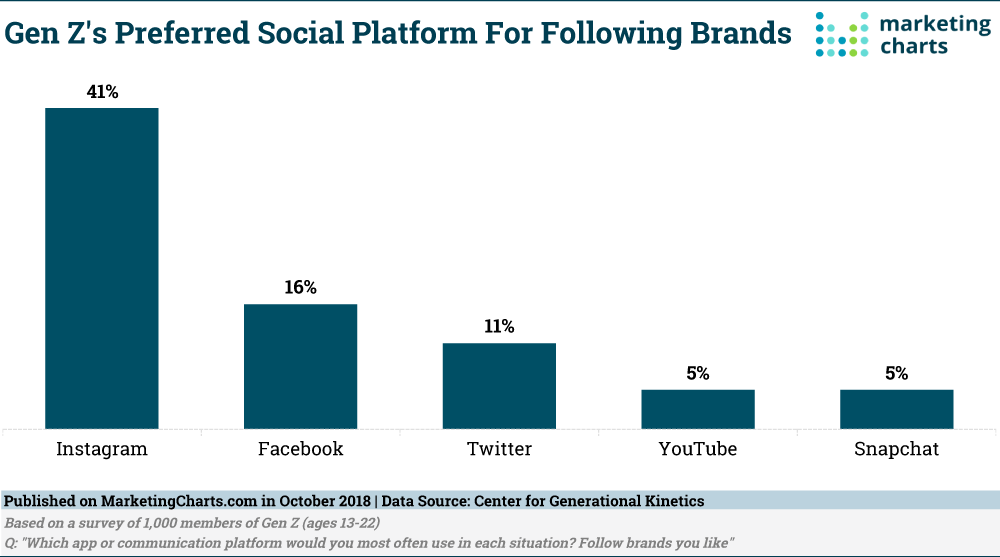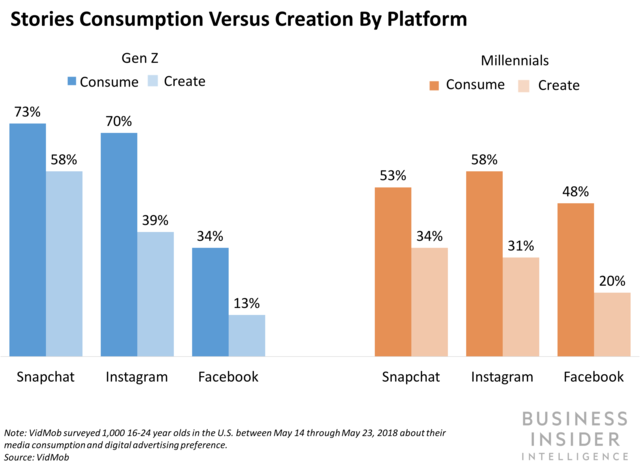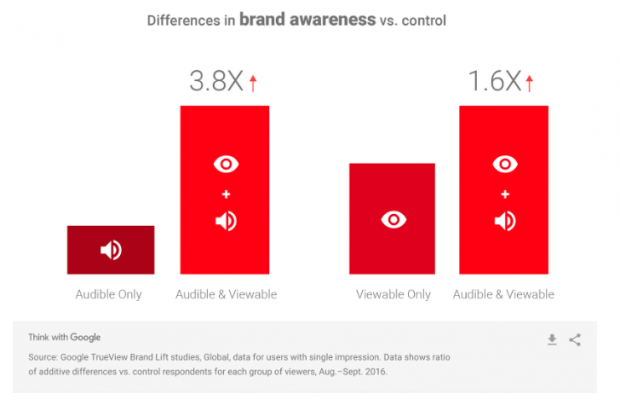Winter Apartment Marketing Outlook

Social Video Marketing Strategies for Student Housing
- 28 February 2019

College-aged students live on their mobile devices. Most spend their time watching videos and using social networking sites. Student housing communities have a variety of choices when it comes to marketing on social media video sharing platforms. YouTube, Facebook, Instagram, and Snapchat all have a share of this market’s attention.
Each of these platforms has its own purpose and communication style. In this blog post, we show you where your target market is engaging with video content, the opportunities, and limitations that these platforms provide student housing marketers, and strategies for getting the most out of these communication channels.
How Students Use Social Media Platforms
In a previous post, we wrote about Gen Z’s online behavior, “What Student Housing Needs to know about Gen Z”. In this blog post, we shared a Google Think study that found that 51% of teenagers spend 3 or more hours a day on social networking and 71% spent 3 or more hours a day watching videos. In recent years, social media channels have put a greater emphasis on video creation, sharing, and promotion.
YouTube, Facebook, Instagram, and Snapchat remain popular among this generation in part because of this group’s preference for video-based content and engaging messaging platforms. While college students interact with all of these social platforms, the way students use these platforms, how frequently they use them, and how they view branded content on these platforms differs.
YouTube
What are the kids doing these days? Watching YouTube videos. Along with the rest of the U.S. adult population. According to Apple, YouTube rose from the third spot in 2017 to the first spot in 2018 in the app store. YouTube beat out Snapchat and Facebook as the free app with the most downloads of the year. A whopping 96% of 18-24-year-olds watch YouTube videos. YouTube usage is the fastest growing among Gen Z (59%) compared to Snapchat (56%) and Instagram (55%).
While YouTube is a popular channel for students to search for and watch video content, it’s not where Get Z prefers to follow brands (only 5% selected it as the number one platform they prefer to use to follow brands). Other studies show that while YouTube isn’t the number one place Gen Z prefers to follow brands, it is a place that Gen Z is comfortable seeing branded content. 79% said that it is always or ok to see branded content on YouTube from influencers.
So what do Gen Z students use YouTube for?
YouTube is where Gen Z is going to discover informative content and enjoy entertainment.
- 66% watch how-to videos.
- 51% watch YouTube for a good laugh.
- 24% use it for shopping recommendations.
- 23% use it to keep up with the news.
Facebook
A majority of college-aged students have a Facebook account (80%), but they don’t use the platform to consume branded content and connect with brands as much as older millennial siblings and their parents. Only 15% of Gen Z prefer Facebook as their number one platform for following brands. 26% of Gen Z uses Facebook to keep in touch with friends but the experience is more passive than Snapchat or Instagram. One of the primary uses Facebook provides 18-24 years olds is to sign up for and create events. Facebook is also a place where Gen Z goes to watch the news and look for shopping recommendations. Though 16% use Facebook to look for shopping recommendations, a greater percentage use YouTube or Instagram.
Video content on this platform is more likely to appeal to the parents of students looking for housing than the students themselves. A Nielsen study found that Gen X spent on average 6 hrs 58 min per week on Facebook (the highest platform usage among the age groups studied).
Instagram
Popularity for Instagram has surged in recent years. The platform introduced stories, direct messaging, a TV channel, and new discovery and shopping functionality. Today 81% of 18-24-year-olds use Instagram and 55% use the platform several times a day. Gen Z is more comfortable with seeing branded content on Instagram than other social platforms (Facebook, YouTube, Snapchat).

In a recent survey of 2,400 Instagram users, one-third became more interested in a product or brand after seeing it on Instagram Stories. 70% of Gen Z consume stories content on Instagram.
Snapchat
78% of college-age students use Snapchat, 82% use it daily, and 71% use it multiple times a day. People under the age of 25 use Snapchat for 40 minutes on average every day, more than Instagram’s latest stat for the same demographic. Gen Z is more likely to consume stories content on Snapchat (73%) than create it (58%), however, stories creation is more popular in Snapchat than Instagram (39%) or Facebook (13%).

Although students are actively engaging in creating Snapchat content, Snapchat is the platform that students are the least comfortable following brands on. Gen Z primarily uses Snapchat to interact with their friends (Gen Z prefers to use Snapchat over Facebook and Instagram for this purpose) and therefore are less likely to welcome content from people outside of their network.
The Opportunities and Limitations of Organic vs. Paid Social Video Campaigns
YouTube
YouTube’s advertising opportunities are expanding. YouTube released “ad pods” last year (two ads per break at the beginning and/or middle of a video) on browsers and are rolling out these back to back ads on mobile this year. Recent research has shown that video ad watchers on YouTube mobile watch over 60% of ads. YouTube ads are unique in that they are more likely to be seen and heard. 95% of YouTube ads are audible vs.15% of Facebook videos. Google claims that audible videos receive more brand awareness, ad recall, and consideration, another reason why this ad platform may be one of the best opportunities to reach college students in 2019.

YouTube isn’t the place that most students are looking to follow brands and many communities may find it difficult to maintain the level of video production needed to create an active and consistent YouTube channel. For this reason, student housing communities have more to gain from pre-roll video ads than organic marketing strategies on YouTube.
Facebook
Organic reach is declining on Facebook as the platform makes room for more advertisers in the feed. Organic content is more likely to be shared in the feed of students and parents if it receives lots of views, likes, shares, and comments in a short period of time. This is becoming harder and harder to achieve as fewer and fewer people see the content in the first place. Video content, however, stands a greater chance of receiving visibility in the news feed than static photo content.
Facebook pages are still a good opportunity for communities to share event details, show off reviews and post about their community, but most of the action that these pages receive will likely be driven by active searching, rather than news feed discovery.
Communities can extend their visibility in the newsfeed using ads. Ad campaigns offer more robust targeting and optimization strategies than sponsored posts, increasing the chances that communities get the kind of interactions they are looking for from their social content on Facebook.
Instagram
Instagram still provides communities with opportunities to expand their reach organically through feed and stories content, but just like Facebook, organic reach is declining. Since Facebook owns the platform, Instagram ads have the same targeting and format options that Facebook ads offer. Your community can target students at a specific university interested in apartments and certain hobbies, activities, people, and brands. Video ads can be presented in the newsfeed and in the stories feed.
In Instagram stories you can show three different ad formats: 15-second video, single image, or carousel (three back to back 15-second videos). In our experience running Instagram stories ads for apartment communities, click-through rates tend to be lower than ad campaigns that run in the newsfeed but the traffic tends to be engaged (the prospects complete online conversions or stay on the site for a while). With most video ad campaigns, it isn’t uncommon to see a smaller, yet more engaged group of website visitors.
Snapchat
Communities looking to use this platform have three main options to reach students. They can post to their stories, create Geofilters or run ad campaigns.
Communities looking to attract followers and post to stories organically will see high viewership rates among followers but struggle to gain followers in the first place. Hootsuite claims that for every 1,000 followers, 900 will watch your story, but Gen Z isn’t as likely to follow brands on Snapchat as they are in Instagram or Facebook.
Brands can pay for Geofilters to try to build brand awareness among students. Geofilters are graphic overlays that Snapchatters can place over the images and videos they sent to friends. Communities can target specific radiuses (around a stadium during a game or around a college campus) for a limited period of time. These filters tend to be expensive to run in popular locations for a prolonged period of time and require a skilled graphic designer to create.
For those communities that don’t have a large Snapchat following and who don’t want to pay a premium for filters will have better luck getting traffic from ads. Ads in Snapchat can be no longer than ten seconds (a few seconds less than Instagram stories). Ads can run in between friend’s stories, creator’s stories, and publisher’s content. Communities can target affinity audiences and send students directly to the community’s website. While these campaigns receive higher bounce rates (they tend to get more accidental clicks) they also tend to get more overall traffic than Instagram stories and they have been known to generate online conversions.
Social Video Marketing Strategies
Whether you’re running a video ad campaign on YouTube, Instagram, Facebook, or Snapchat, there are a few fundamental things student housing communities should incorporate in their ad campaigns.
Be Relevant
Ads are skippable, swipeable, and scrollable. Communities only have a matter of seconds to capture a student’s limited attention when they run a video ad. What’s the key to getting prospects to pay attention? Relevancy.
If you were about to watch a video on YouTube and you saw an ad about an apartment community with no clear idea of where the community is located, would you watch it?
It’s imperative that at the start of your student housing video that you make sure students know that you are an apartment community located near their university. Unless you make this crystal clear within seconds, they will likely skip your ad.
Beyond the basics of communicating who you are and where you’re located, what else helps communities establish relevance with their audience?
Pricing, floor plans, and amenities.
Price is the most important factor for students when looking for a community. While many communities may not want to lead with price in their videos, it can be used as a way to qualify your audience and elicit more from those that can afford your community. Since many communities use dynamic pricing, incorporating ad messaging later in the video that says, ”Pricing ranging from $1200’s-$1800’s” or “Prices starting at $1300” can help your community establish relevance without using exact pricing.
Our team conducted a YouTube ad performance study and found that videos that incorporated both tour and lifestyle content led to more ad engagement than videos that only incorporated tour or lifestyle content alone.
Use your video content to highlight the amenities that students care about. If your units are fully furnished, pet-friendly, and have updated features, showcase these in your video. Make sure to show what the units look like and mention which floorplans you offer to maintain relevancy and qualify prospects.
Be Authentic
Gen Z, more than any other generation, is sensitive to inauthentic online content. Most choose to follow influencers and consume stories content because they perceive this content to be more trustworthy and genuine. The newsfeed in Instagram and Facebook is still considered to be a place for polished, less realistic content. Stories content in Instagram and Snapchat tends to be more user-generated, unpolished, and playful.
What can your community do to create a more authentic video ad?
Show your community in a realistic light. Video content can be both high quality and authentic at the same time. Give a short video tour of your community and showcase real people using your amenities. Consider incorporating real resident testimonials. 86% of Gen Z reads reviews before making a first-time purchase using their own money, and about two-thirds need to read at least 3 reviews. Film resident reviews of your community that feel honest and informative. Consider weaving this content together as the voiceover in a video ad. If you incorporate this content in a Facebook or Instagram ad, consider captioning the content. While most users watch YouTube and Snapchat videos with the sound on, most don’t in Facebook’s platforms.
Guide the Prospect to the Next Step
End your videos with a clear call to action. We know that leasing agent’s number one goal is to sign leases, but there are steps that prospects take before they get to that stage of the funnel. For some communities, running a campaign with a See Floorplans, Learn More, Tour Today, or Attend Our Event call to action can lead to better results. If you are serving a retargeting ad to someone who has already visited your site, a stronger “Tour Now” or “Lease Now” call to action may make more sense.
Even though this message is known as a “Call to Action” we don’t recommend your community use a “Call Now” message at the end of a student housing campaign. Most students prefer to engage with your community online over making a phone call. Students are more likely to use tour scheduling tools and live chat services to answer questions and set up appointments instead of placing a phone call.
Conclusion
College students use popular social media platforms differently. Communities need to understand the way students use these platforms and where and in what format students want to see content from apartment communities. The days of spray and pray with social media are over. Communities looking to effectively use social platforms to reach college students need to consider investing in advertising. Apartments looking to get the most out of their ad dollars should create videos that are relevant, authentic and that lead prospects to the next stage in the customer journey.
Did you find this article interesting? Consider sharing it with a colleague using the social sharing buttons on this page.
Categories
- Auto
- Automotive Marketing
- Consumer Behavior
- Conversion Drivers
- Dealership Marketing
- Dummy
- Email Marketing
- Emailers
- Excellence
- Featured Posts
- General
- Google Adwords
- Internet Marketing
- Ipsum
- Live Chat
- Local Business
- Local Marketing
- Lorem
- Marketing News
- Marketing Research
- Marketing Strategies
- Marketing Tactics
- mobile marketing
- Multifamily Housing
- reputation management
- Retargeting
- Search Engine Marketing
- Search Marketing
- Senior Living
- SEO
- Service
- Social Media
- social media
- Student Housing
- video advertising
- Websites
The four ad mistakes that are Costing you leases
And How to Fix Them Fast!


